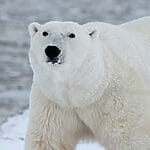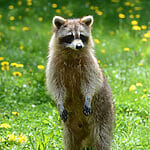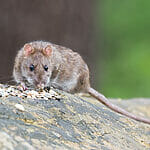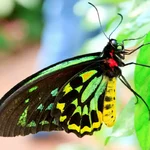Ferrets are a popular pet that is also part of the Mustelidae family. Many members of the Mestelidae family have similar appearances to one another, so there are many animals that look like ferrets.

There are currently over five-hundred domestic ferrets in the United States, but they have also been confused for the black-footed ferret, another type that we shall look into later in this article.
For now, let’s take a look at the many animals who share a similar appearance to ferrets.
What Are Mustelids?
Mustelids are members of the Mustelidae family, and are a part of the same family as ferrets and other badgers. They are all carnivorous mammals, and they are one of the largest families among the order of Carnivora.
There are over 66 species in the Mustelidae family, and at least nine subfamilies. These subfamilies include:
- Guloninae
- Helictidinae
- Ictonychinae
- Lutrinae
- Melinae
- Mellivorinae
- Mustelinae
- Taxidiinae
- Oligobuninae
Of all of these subspecies, only the Oligobuninae is extinct. Many mustelids vary in size, but they all have distinct characteristics. Many members of the Mustelidae have been targeted for their fur.
They all tend to have elongated bodies, short legs and skulls, and short ears with thick fur. Many live in solitary areas, and the majority of them are also nocturnal.
Badgers
As another member of the Mustelidae family, badgers and ferrets share a number of similarities. However, ferrets are often more lithe than badgers, as badgers are known for being significantly larger than their ferret cousins.
Unlike ferrets, badgers are known for having stripes on the top of their heads, and have significantly longer claws on thicker paws to help them burrow into the ground.
One of the most closely related badgers to ferrets is the ferret-badger, which is known to look very similar, and roughly around the same size as the ferret.
Black-Footed Ferret
Almost identical to their domesticated cousin, the black-footed ferret is native to North America. They have been classed as endangered by the International Union for the Conservation of Nature, and are on the red list.
The difference between the black-footed ferret and the domesticated ferret is the markings they have on their face, and the trademark black feet that they are named for.
Like the fisher, they have been hunted for their pelt, which is what has made them join the endangered list.
Fishers
The fisher is sometimes known as the fisher cat, despite not being of any relation to felines. It is often dark brown in color, and they are known for climbing up trees, and having longer and furrier tails than the average ferret.
Aside from that, they are considerably similar to each other in appearance. Males are often twice as large as female fishers, and their fur tends to be glossier in the winter.
They were once hunted for their pelts, but with the help of conservation efforts, they were able to be saved from becoming extinct.
Greater Grison
Located in the South and Central Americas, the greater grison is a mustelid that has a similar appearance to ferrets. They are slender, have a short neck, and are known for having a short bushy tail. Unlike ferrets, they are considerably larger in size.
Like the otter, they have webbed toes, but they are known for being more muscular than them. The greater grison has dark, bushy fur, and has lighter fur on their heads and shoulders.
While they can climb trees and swim, they tend to be more active during the day, instead of nocturnal like others.
Martens
As a close relative of the fisher, martens are another close relative of the ferret. They look similar, however, they have bushier tails and retractable claws.
You’ll be able to find them with either yellowish or dark brown fur depending on the type of marten you find. Like fishers and black-footed ferrets, they are hunted for their fur by animal trappers.
They are also known to have slightly bigger ears than ferrets, plus slightly longer legs among some species. You can find different types of martens from around the world(see also: Types Of Carp From Around The World).
Minks
Unlike ferrets, minks are known for being dark and semi aquatic mammals. Over the years, the American mink has been hunted for its fur, and because of that they have been a concern among animal rights and welfare activists.
Around Europe, animal rights activists released minks into the wild, and because of that, European minks were believed to have gone into decline. Nowadays, it is illegal in some countries to release minks in the wild, and in some cases, they are humanely killed.
Otters

There are a variety of different types of otters (see also: Different Types Of Otters From Around The Globe)to exist, and they are closely related to ferrets. They are members of the Mustelidae family, however, they are technically under the branch family: Lutrinae.
They are semi aquatic and aquatic, and are known for looking similar to ferrets. However, they also have webbed feet and relatively shorter limbs.
Like other members of the Mustelidae family, they have sharp claws and have slimmer bodies. Their hairs have long guard hairs that cover a softer, more insulated underfur, making them buoyant in water too.
Polecats
Despite having the word cat in their name, polecats are not related to felines. European polecats look similar to the black-footed ferret. They both have dark mask-like markings on their faces, however, the polecat is also not to be confused with the skunk.
In the southern states you may hear skunks being referred to as polecats, but they are both different creatures, with skunks only being mildly related to polecats.
Around the world, different types of polecats have different markings, with their fur having different colors depending on where they’re from.
Skunk
We previously mentioned skunks, who were previously believed to be a part of the Mustelidae family. However, it was eventually decided that they are a part of the Mephitidae family.
They share the traits of long bodies, short legs, and smelly glands, however, they are considerably larger. Many skunks are the size of the average housecat.
They can regularly be found burrowing in the ground, where it will search for insects and earthworms, but they are also happy to eat plants and other vegetation.
Stoat
Sometimes referred to as ermines, stoats can be found in Eurasia and North America. They are distinct from the long-tailed weasel. However, the stoat is known to vary in size. They are considerably larger than weasels, and their tails are longer.
They have elongated necks, and their ears are relatively flat against their skull. Unlike other Mustelidae, their claws aren’t retractable, and are in fact proportioned to their digits.
In the winter, they have dense and silky fur, while their summer fur is shorter and more sparse.
Tayra
The tayra is another Mustelid that is similar in appearance to weasels, martens, and ferrets. You can find them in South America, and are known for being omnivores. They have slender arms, but males tend to be more muscular.
The tayra is distinct for its bushy tail and dark fur, but the fur on its neck is often lighter. Among mustelids, they are known for climbing and running, and may not burrow into the ground as much.
Instead, they will travel across grasslands at night and seek shelter in forests. Generally, their behavior isn’t as understood as other mustelids.
Weasels
Stoats and weasels are often compared to one another, with both of them having similar colorations. One of the most commonly compared is the least weasel, which is the smallest type of weasel in the Mustelidae.
They tend to have slender bodies and short legs, with brownish-red and white fur. However, some may also molt a white coat in the winter.
They are active hunters, and have been known to follow their prey into their own burrows If you’re looking for a weasel, you can find them in most continents, including Europe, Asia, and North and South America.
Wolverines
The wolverine is the most muscular member of the Mustelidae family, and is known for being more muscular than the ferret. They have dark fur, and have a similar body shape.
Compared to other Mustelidae, the wolverine is more solitary, and has been known to take down prey that is larger than itself.
Globally, they aren’t particularly vulnerable, but they are more vulnerable in Europe and have been classed as such by the International Union for the Conservation of Nature.
Final Thoughts
As you can see, the ferret has many close relatives that look similar to it. The Mustelidae family shares many similar traits, including a slender body and short legs.
Many of the members of this family are semiaquatic, and some of them enjoy burrowing into the ground. Generally, it is easy to find mustelids who are related to one another without any issues. In exploring ferret-like animals, it’s essential to delve into the Mustelidae family tree, which encompasses a diverse range of species including ferrets and other mustelids like the European polecat (Mustela).
These creatures are often mistaken for ferrets due to their similar animal characteristics, such as being long and slender with a body length that varies depending on the species. Most notably, they share a subfamily with ferrets, yet some are much bigger than ferrets.
In conclusion, the Mustelidae family, which includes ferrets, is marked by its diversity in size, habitat, and physical attributes. From the slender, ferret-like weasels to the robust, semi-aquatic otters, this family showcases a fascinating array of carnivorous mammals, each adapted to their unique environments and lifestyles.
Despite their differences in size, ranging from a few inches to several feet, these animals share common traits like scent glands and a carnivorous diet, often leading to them being grouped together in the broader category of ferret-like animals.
If you would like to know more about animals that look similar to others, then consider checking out our other articles. There are plenty of fun facts ready for you to explore.








